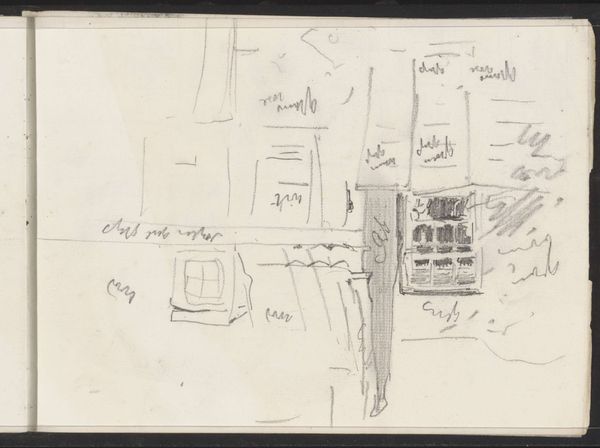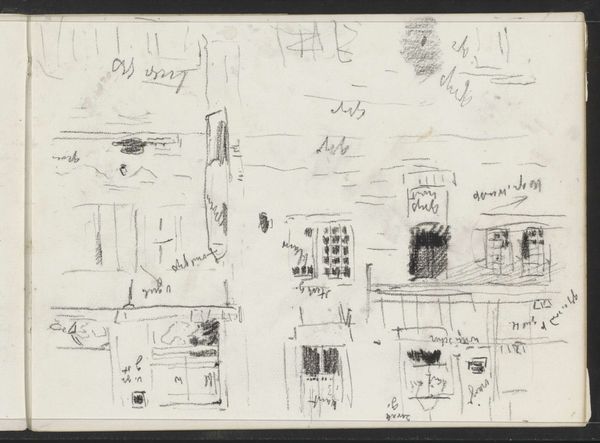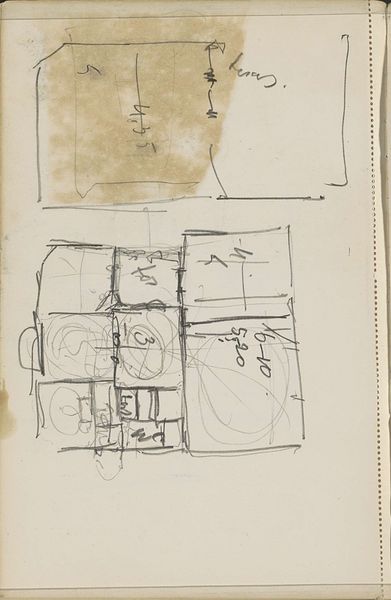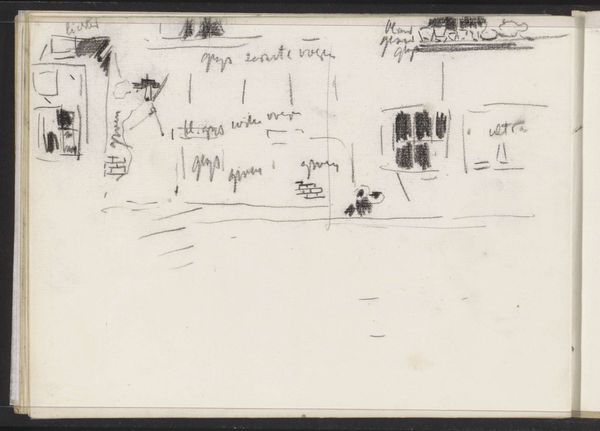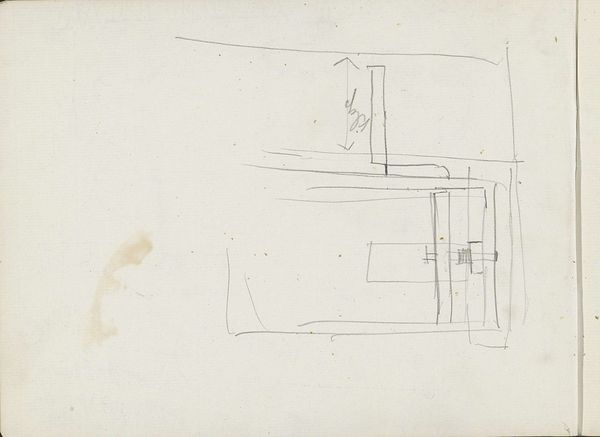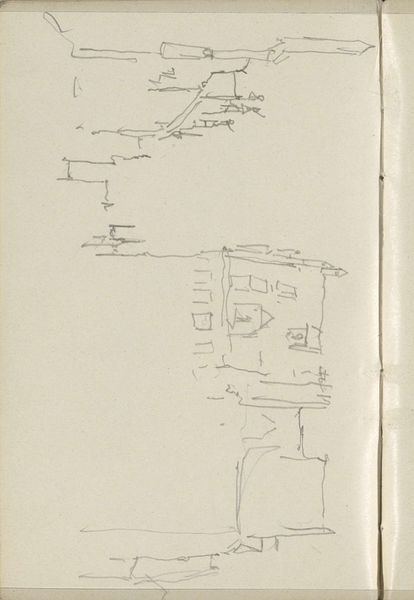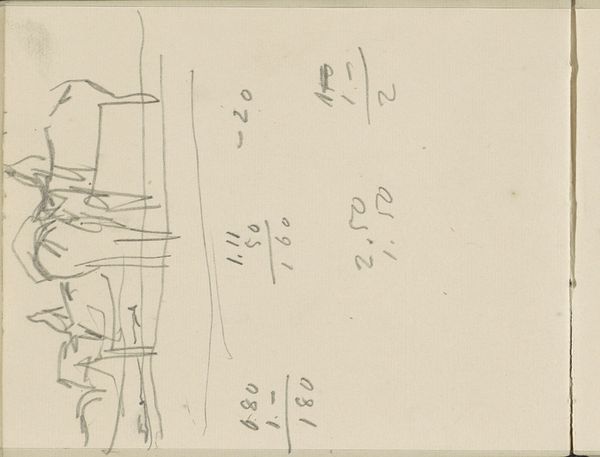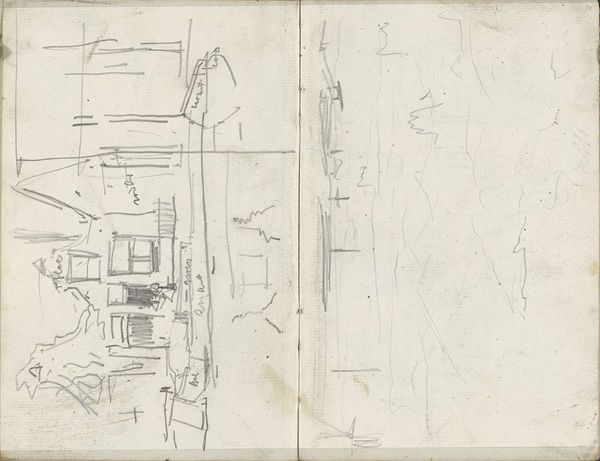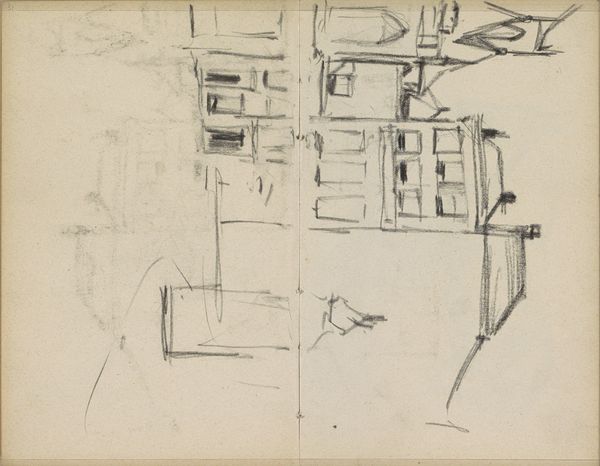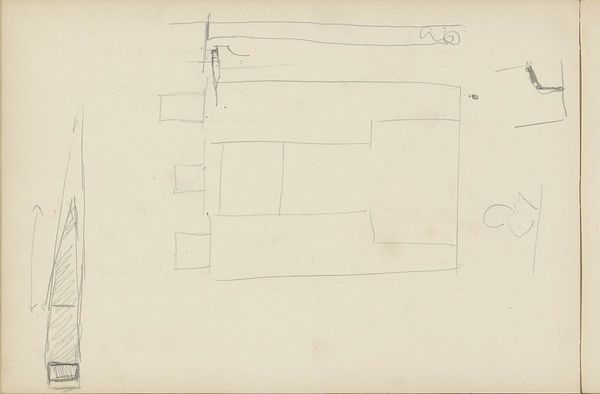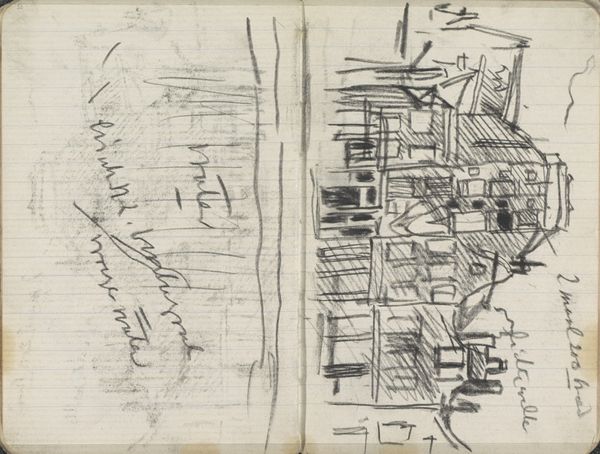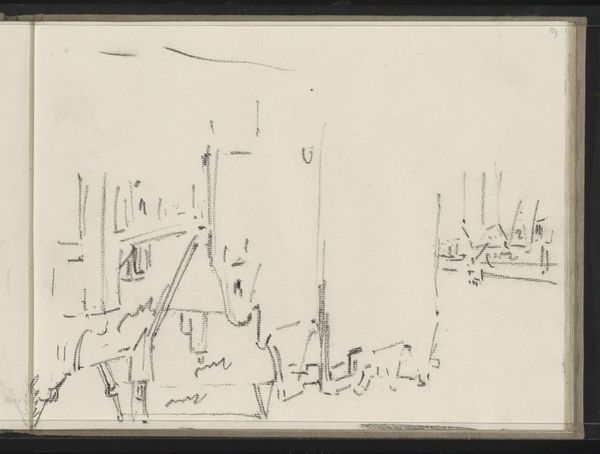
Bebouwing, mogelijk aan de Voorstraatshaven te Dordrecht c. 1898 - 1899
Copyright: Rijks Museum: Open Domain
Curator: This is a fascinatingly sparse drawing by Willem Witsen, likely sketched around 1898 or 1899. It’s titled "Bebouwing, mogelijk aan de Voorstraatshaven te Dordrecht" – "Buildings, possibly at Voorstraatshaven in Dordrecht," and you can find it here at the Rijksmuseum. Pencil and ink on paper, right? I’m immediately drawn in by the raw vulnerability of a sketchbook page laid bare. What are your first impressions? Editor: Ethereal. That's the first word that floats to mind. The way Witsen has captured these buildings feels less about concrete reality and more about an elusive feeling, a memory almost fading away. Look at those tentative lines! Do you think the vagueness here speaks to a deeper longing for a simpler, perhaps lost, time? Curator: Precisely. There's something so ephemeral about it. But it is not a painting - it’s a sketch, something quick and transient. You almost see the artist's hand moving across the page. These fleeting moments of urban life are noted down not to be frozen in place, but felt. Witsen wasn’t just documenting architecture; he was capturing light and shadow. Editor: Definitely, light is pivotal. Even in the monochrome sketch, you can feel where the light's pooling, where it's retreating. Did the notes jotted around the sketch act like aide-memoirs or even directions for a painting to be made later, a system of private notations helping him translate visual stimuli to color values. He appears to make small text notes in German, too? Curator: Yes, those scattered German annotations. Like cryptic poems surrounding the core visual scene. I'd imagine he had hopes to fully render this subject on a larger scale - but perhaps there is still such evocative appeal because of this form. Editor: Right. There is no need to render perfectly here - in fact, I may like it more than a perfect rendition of these buildings, which may make it stale. Curator: It makes you think, what were his intentions with these on-the-go scribblings. Did he always intend them for public consumption, or were we never intended to see his sketchbook at all. Editor: These types of sketches unlock time—offering insight into the quick moments of a passing glance as we try to capture time as we witness. You can almost see him making the marks on this piece. The more I examine this work, the richer my thoughts become about art itself.
Comments
No comments
Be the first to comment and join the conversation on the ultimate creative platform.
